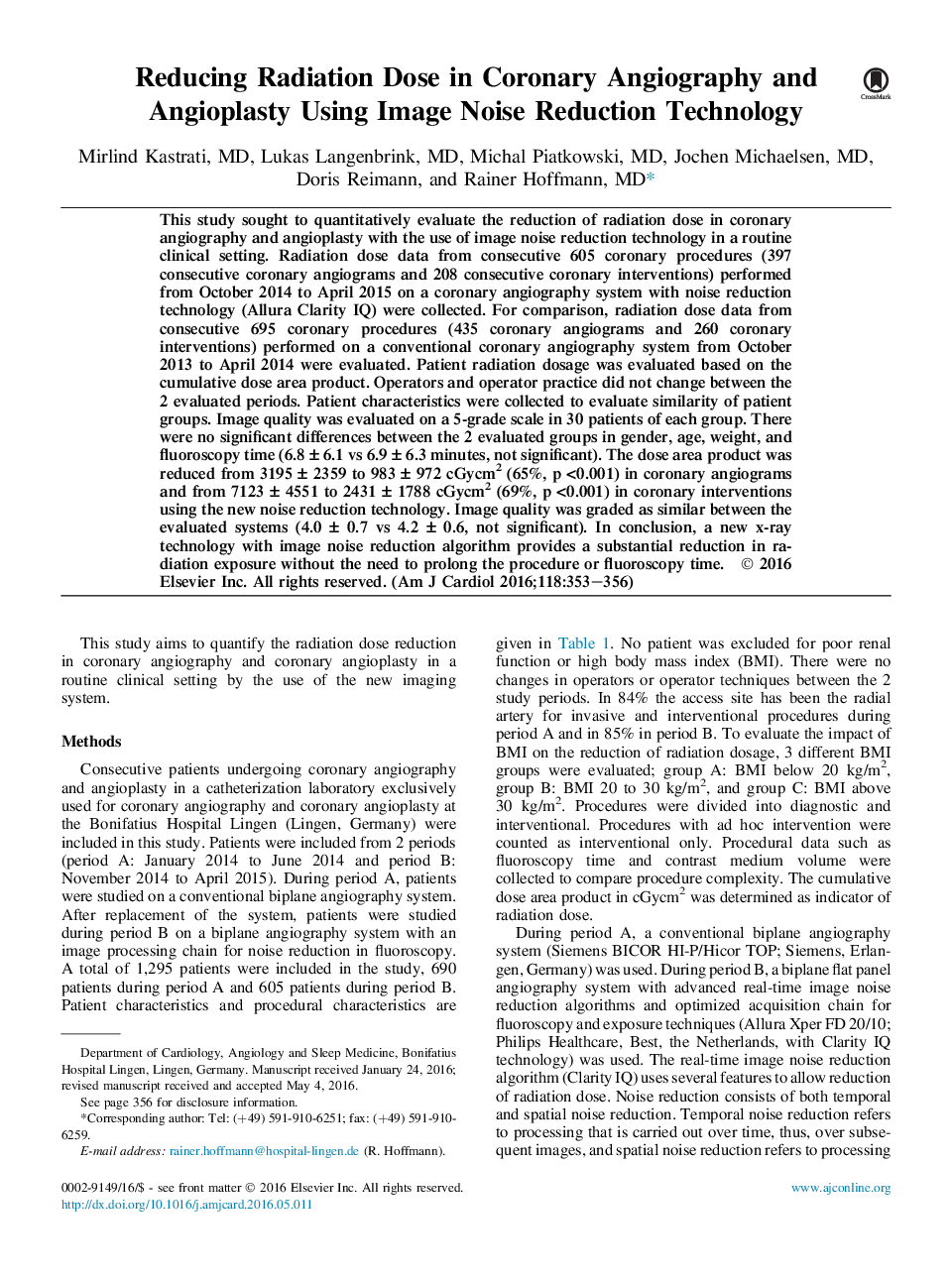| Article ID | Journal | Published Year | Pages | File Type |
|---|---|---|---|---|
| 5929513 | The American Journal of Cardiology | 2016 | 4 Pages |
This study sought to quantitatively evaluate the reduction of radiation dose in coronary angiography and angioplasty with the use of image noise reduction technology in a routine clinical setting. Radiation dose data from consecutive 605 coronary procedures (397 consecutive coronary angiograms and 208 consecutive coronary interventions) performed from October 2014 to April 2015 on a coronary angiography system with noise reduction technology (Allura Clarity IQ) were collected. For comparison, radiation dose data from consecutive 695 coronary procedures (435 coronary angiograms and 260 coronary interventions) performed on a conventional coronary angiography system from October 2013 to April 2014 were evaluated. Patient radiation dosage was evaluated based on the cumulative dose area product. Operators and operator practice did not change between the 2 evaluated periods. Patient characteristics were collected to evaluate similarity of patient groups. Image quality was evaluated on a 5-grade scale in 30 patients of each group. There were no significant differences between the 2 evaluated groups in gender, age, weight, and fluoroscopy time (6.8 ± 6.1 vs 6.9 ± 6.3 minutes, not significant). The dose area product was reduced from 3195 ± 2359 to 983 ± 972 cGycm2 (65%, p <0.001) in coronary angiograms and from 7123 ± 4551 to 2431 ± 1788 cGycm2 (69%, p <0.001) in coronary interventions using the new noise reduction technology. Image quality was graded as similar between the evaluated systems (4.0 ± 0.7 vs 4.2 ± 0.6, not significant). In conclusion, a new x-ray technology with image noise reduction algorithm provides a substantial reduction in radiation exposure without the need to prolong the procedure or fluoroscopy time.
